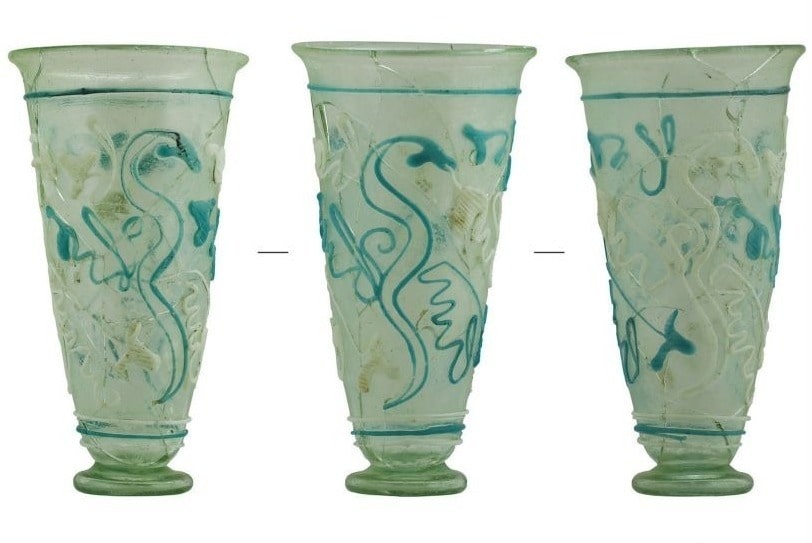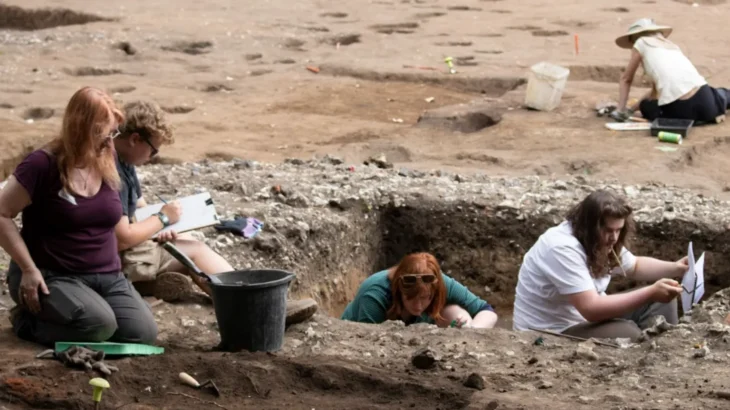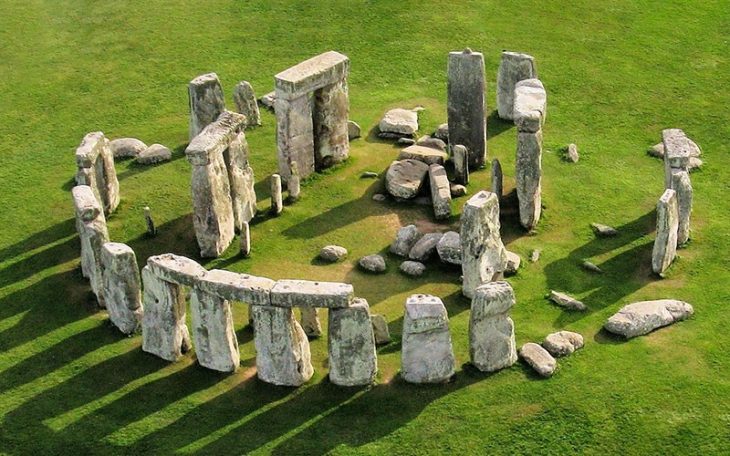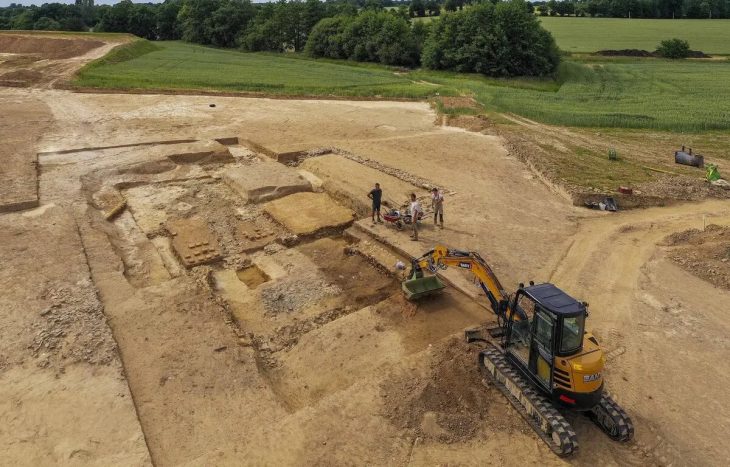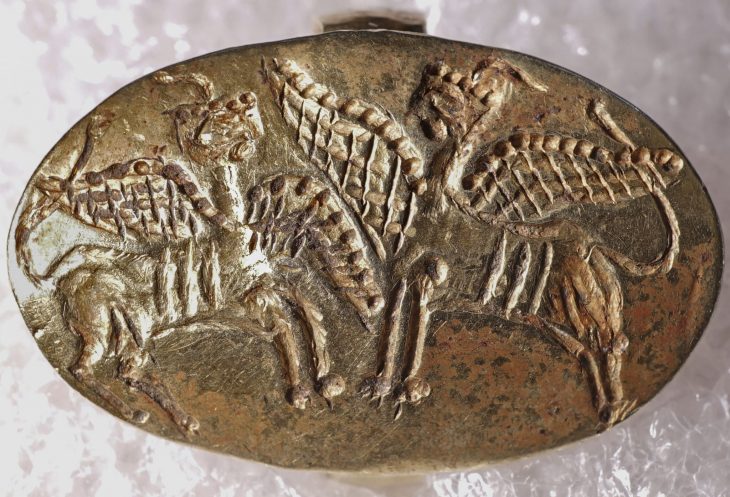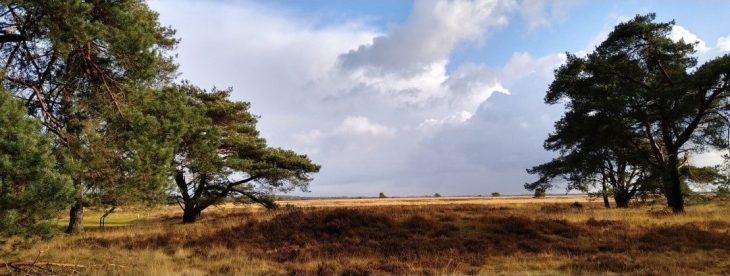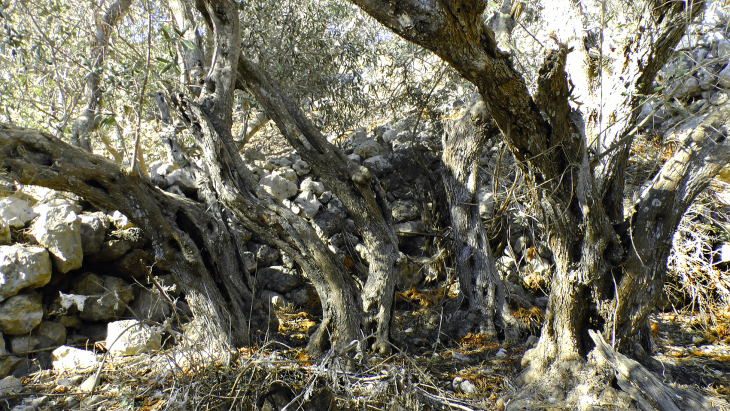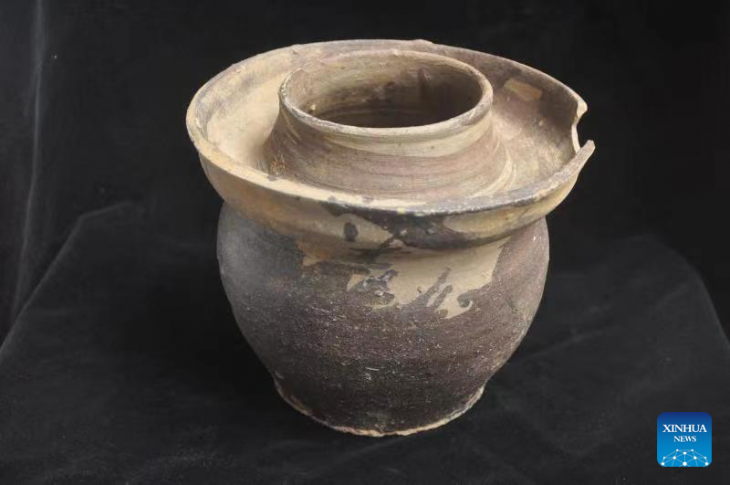A discovery made in Frontovoye-3 necropolis in Crimea shows that during the Roman Empire there were more centers of glass production, beyond those known until now.
Experts from the Institute of Archaeology of the Russian Academy of Sciences published a report in 2018 on a rare study of glass cup from the late 2nd or mid-3rd century AD found in the Frontovoye-3 necropolis near Sevastopol.
Despite thoroughly studying the decoration, shape and chemical composition of the glass using the X-ray spectroscopy method, the origin of the piece could not be established, according to a release of the Institute of Archaeology. The only conclusion they reached was that the cup came from a workshop on the outskirts of the Roman Empire.
The glass cup, is adorned with a snake, was made of mixed composition glass, which means that the craftsmen used glass shards in its manufacture. As a rule, this technology was used in workshops that had difficulties in importing high-quality raw materials.
The goblet is made of clear, colorless glass with a slight greenish tint, and is decorated with floral decorations of opaque white glass and translucent turquoise. Stylized images of ivy buds and leaves are also seen. This decoration is known as “serpent thread decoration”, according to archaeologists, because the lines of the ornament resemble writhing snakes.
📣 Our WhatsApp channel is now LIVE! Stay up-to-date with the latest news and updates, just click here to follow us on WhatsApp and never miss a thing!!
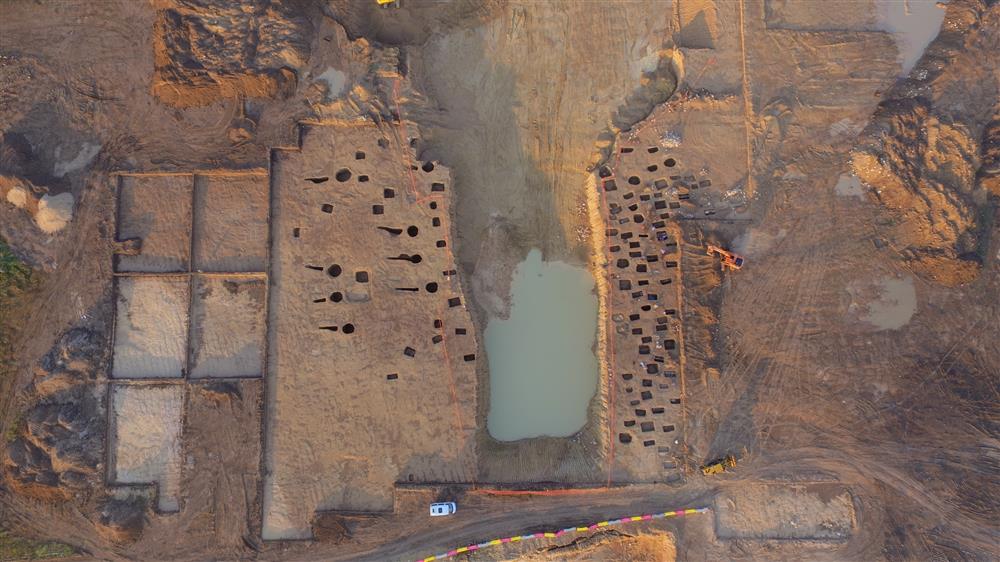
The glass cup, from the late empire, is adorned with a snake and was found in the sepulcher, which has not been looted by thieves, of a woman between 25 and 45 years old. Therefore, archaeologists were able to fully explore the place and watch how the culture and life of the local barbarian community have changed over the course of nearly 300 years. Examination of the finds showed that the local population was under the strong influence of the Roman Empire, whose main base in Crimea was the Chersonese.
Alongside her remains were also bronze and silver rings, brooches, glass beads, and earthenware, indicating that the area was prosperous.
“The cup found at the Frontovoy-3 site is an expensive object for the time. As a general rule, the cups were made in three large glass-making centers located in Cologne, Pannonia (where Hungary is today) and in the region where today there is Syria and Palestine. They were produced from high-quality Egyptian raw materials,” said Larisa Golofast, a researcher in the Academy’s Department of Classical Archaeology.
“However, the Frontovoe-3 find differs from the goblets that these centers traded. Judging by the composition of the glass, it could not have been made in any of the known workshops. The decoration of the vessel is similar to Rhenish goblets, but its shape does not correspond to the models that were made in Western Europe. The cup cannot be associated with any center. This is really an intrigue,” he concluded.
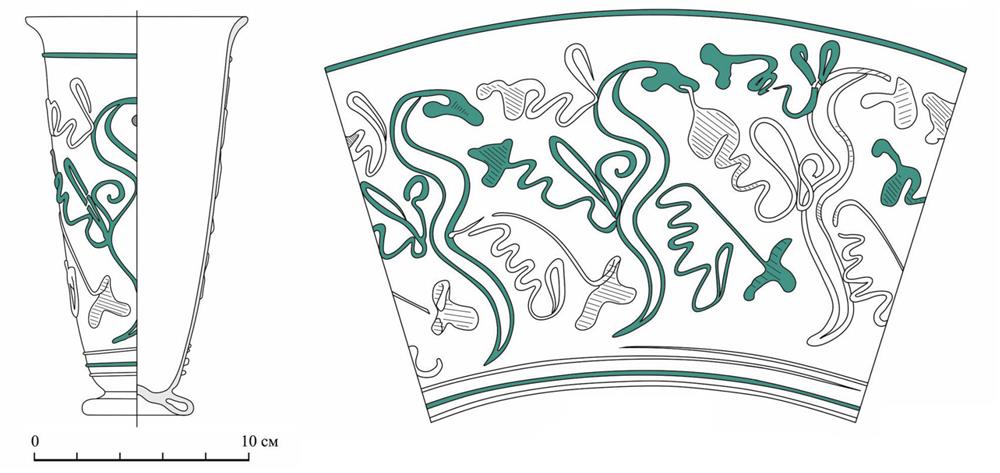
Such cups were considered luxury items and were an integral part of the table of the rural and urban elite. They’re mainly exclusively discovered in the graves of the wealthy in Western Europe.
However, there is another situation that surprises archaeologists. The artifact comes from a completely ordinary tomb, although there are rich tombs in the Frontovoe-3 necropolis.
“It’s a very rare vessel. Only a few of these were found in Crimea and in the entire northern Black Sea region.”
“This fact is interesting and inexplicable,” says Larisa Golofast, a researcher at the IA RAS Department of Classical Archeology.
Most of the 328 tombs in the necropolis date from Roman times, from the last decades of the 1st century and the beginning of the 5th century after Christ. In addition, scientists have also found four structures from the Bronze Age. The complex occupied an area of about 14,000 square meters.
The Institute of Archaeology of the Russian Academy of Sciences

